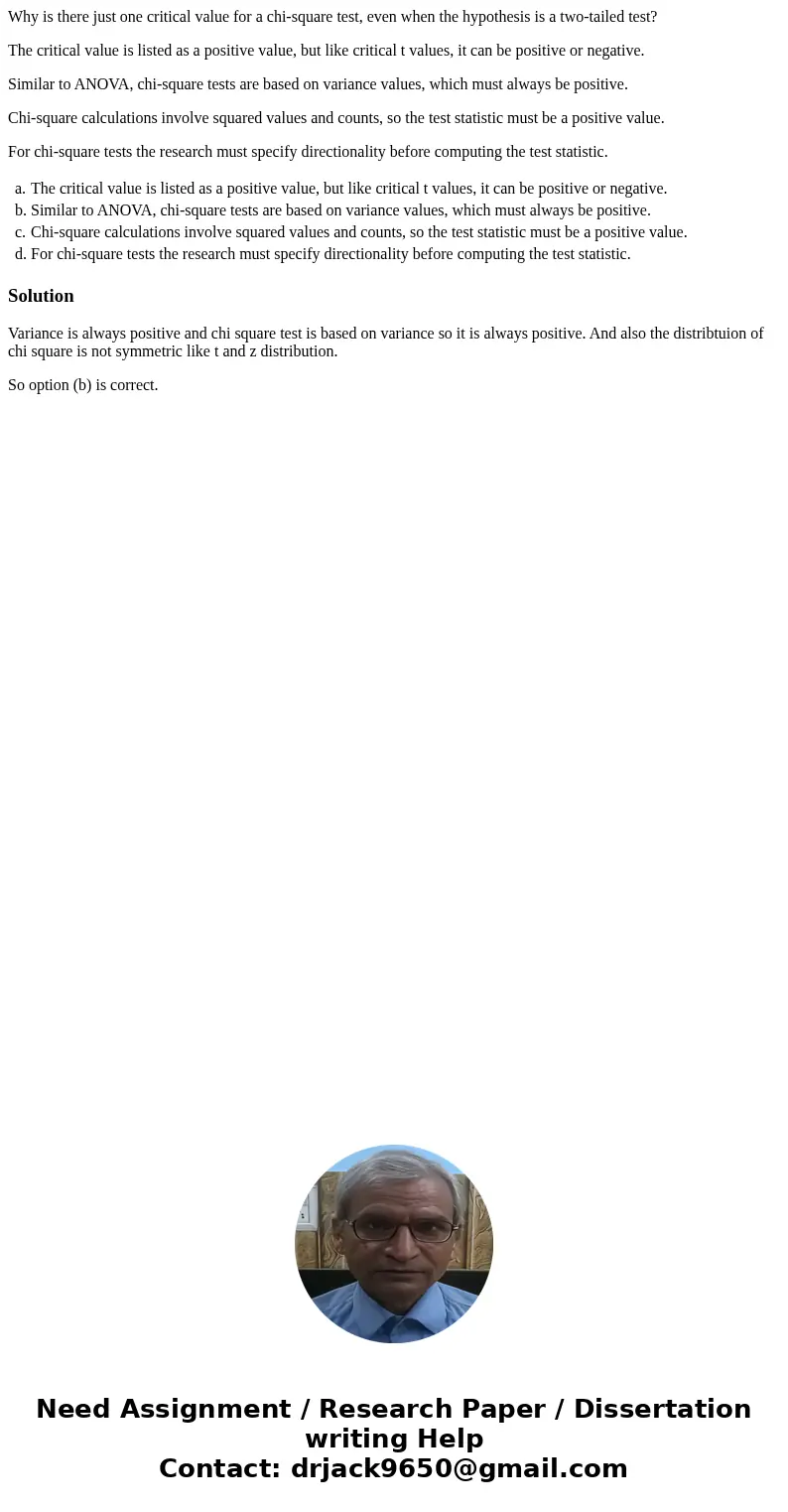Why is there just one critical value for a chisquare test ev
Why is there just one critical value for a chi-square test, even when the hypothesis is a two-tailed test?
The critical value is listed as a positive value, but like critical t values, it can be positive or negative.
Similar to ANOVA, chi-square tests are based on variance values, which must always be positive.
Chi-square calculations involve squared values and counts, so the test statistic must be a positive value.
For chi-square tests the research must specify directionality before computing the test statistic.
| a. | The critical value is listed as a positive value, but like critical t values, it can be positive or negative. | |
| b. | Similar to ANOVA, chi-square tests are based on variance values, which must always be positive. | |
| c. | Chi-square calculations involve squared values and counts, so the test statistic must be a positive value. | |
| d. | For chi-square tests the research must specify directionality before computing the test statistic. |
Solution
Variance is always positive and chi square test is based on variance so it is always positive. And also the distribtuion of chi square is not symmetric like t and z distribution.
So option (b) is correct.

 Homework Sourse
Homework Sourse